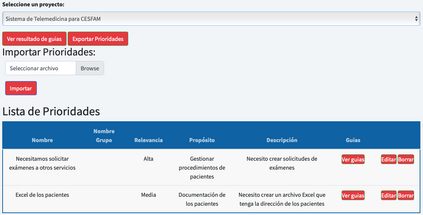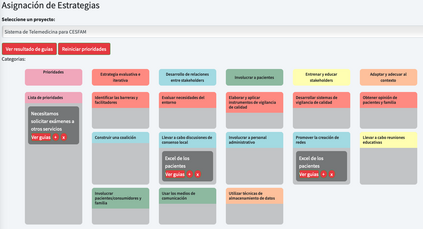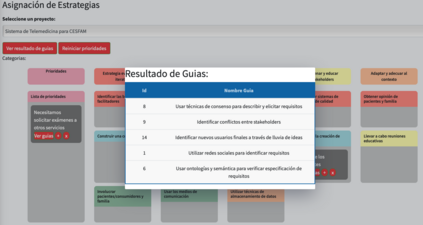Clinical software has become a significant contribution to support clinical management and intra-hospital processes. In this regard, the success or failure of clinical software is mostly yielded on a suitable requirements elicitation process. Although several techniques and approaches address this process, the complexity of clinical services and the variety of clinicians involved in those services make it challenging to elicit requirements. To address this concern, in our previous work, we have proposed the D&I Framework. This collaborative technique translates clinical priorities into guidelines for eliciting software requirements in the healthcare context using implementation and dissemination strategies. This article evaluates the functionalities and tasks implemented in a clinical bed management system whose requirements were elicited using the D&I Framework. We focused on evaluating clinicians' usability expectation levels using a specific questionnaire executed in 2018 and 2020. The results show that, in comparison with the first release (2018) and the last one (2020), clinicians perceive an improvement in the functionalities and tasks implemented in the system. This study introduces the effects of implementation and dissemination strategies to elicit pragmatic clinical requirements.
翻译:临床软件已成为支持临床管理和医院内程序的一个重要贡献。在这方面,临床软件的成败主要取决于适当的需求引发过程。虽然有几个技术和方法解决了这一过程,但临床服务的复杂性以及参与这些服务的临床医生的多样性使得产生需求成为了挑战。为了解决这一关切,我们在先前的工作中提出了D&I框架。这一协作技术将临床优先事项转化为指南,以便利用实施和传播战略在保健方面提出软件要求。本文章评估临床床管理系统的功能和任务,该系统的要求是利用D&I框架提出的。我们侧重于利用2018年和2020年执行的具体问卷评估临床医生的可用性预期水平。结果显示,与第一个单元(2018年)和最后一个单元(202020年)相比,临床医生认为该系统的功能和任务有所改善。本研究报告介绍了实施和传播战略的影响,以得出务实的临床需求。








